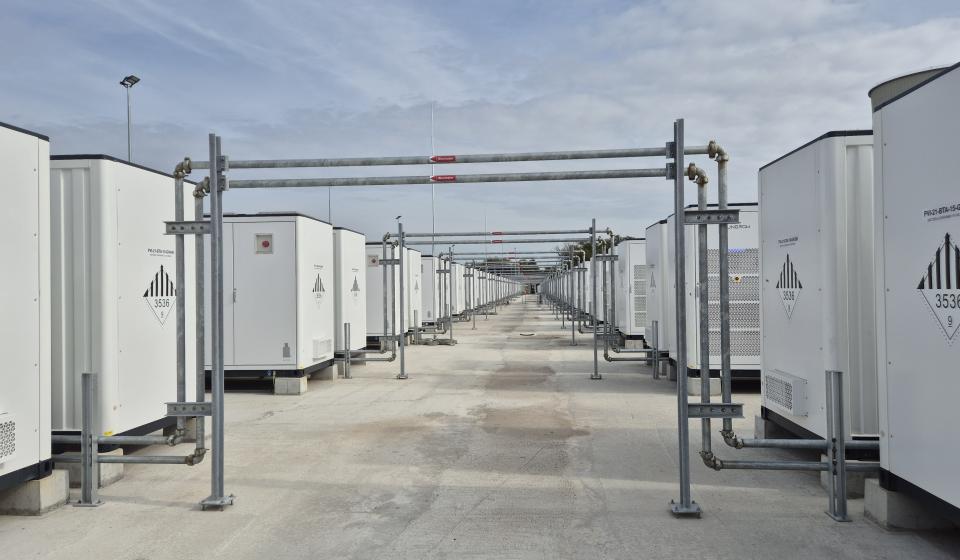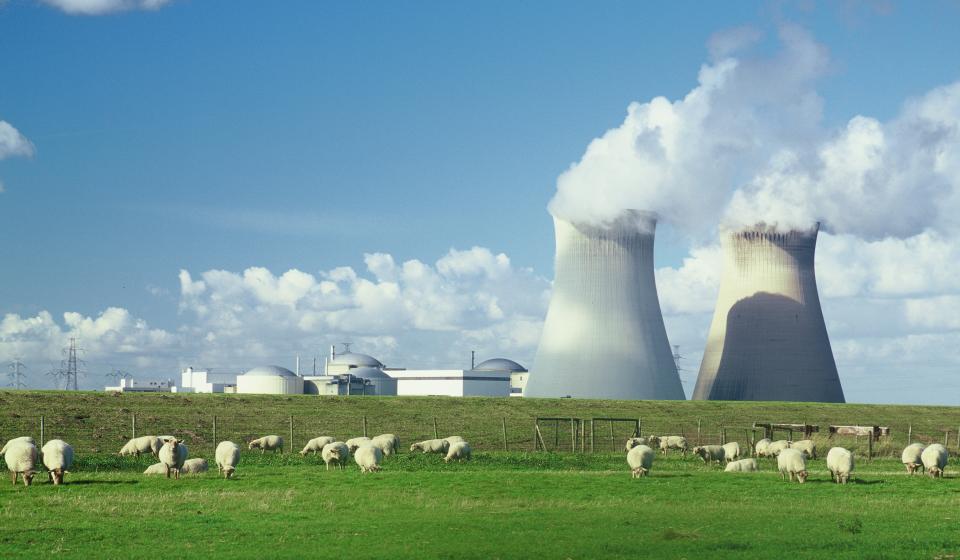Code Red action: objectifying the debate
Among other things, the claim that ENGIE is the most polluting company in Belgium is factually incorrect. Code Red also made wrong assumptions about ENGIE's strategy and activities.
Below are some elements to counter their arguments:
ENGIE's vision of the energy transition
ENGIE is convinced that the transition to a carbon-neutral energy system is essential and has therefore made it the core of its business strategy, objectives and activities. A successful transition involves reducing carbon emissions to net zero while keeping costs under control for citizens and businesses and building a robust and reliable energy system.
Based on its own analysis of the energy system of 15 European countries (including Belgium), ENGIE concluded that to achieve the transition to a net zero carbon economy within a timeframe of fewer than 30 years, without dogma or bias, we need to make use of all the sustainable solutions that already exist and are under development.
For instance, it is necessary to significantly accelerate the deployment of renewable energies if we want to meet Europe’s climate targets while limiting the costs of the transition. Furthermore, increasing energy savings and efficiency is necessary to reduce energy consumption.
Technologies such as battery storage, pumped storage, steam and gas-fired power plants will provide the flexibility needed in a system that increasingly relies on renewable energy sources.
CO2-free hydrogen, and green molecules produced from hydrogen, are key to reducing CO2 emissions from the transport sector and certain industrial applications. Almost half of this hydrogen will be produced locally in Europe.
The energy transition requires massive investments
ENGIE Group is committed to making its operations globally carbon-neutral by 2045. Since 2017, ENGIE Group's global greenhouse gas emissions have decreased by 33%.
To achieve its 2045 target, the Group developed a pathway that provides for a steady reduction in carbon emissions from all its operations, with interim targets for 2030. This long-term strategy relies on ENGIE's four core activities, namely renewable energy, local and centralized energy networks, flexible energy production and energy supply.
As part of this strategy, the Group will invest €22-25 billion in the period 2023-2025 alone. 75% of this will go to activities qualified as sustainable in the EU sustainable investment classification system (EU taxonomy). 70% of the investments will go to renewable energies and sustainable energy solutions (e.g. electric mobility, solar panels, energy management systems), and up to 10% will go to batteries and green gases.
More details on our strategy and action plan can be found at https://www.engie.com/en/news/net-zero-carbon-roadmap
Belgium's nuclear and gas power plants’ role in ENGIE's strategy
The choice of whether or not to make nuclear energy part of the national energy mix is a political and social choice. In 2003, Belgium adopted a law that provides that all nuclear power plants in the country must stop producing electricity by 2025. Meanwhile, Doel 3 and Tihange 2 nuclear units have already been permanently shut down; Doel 1 and 2 and Tihange 1 will follow in 2025, in line with the legal schedule. Only for Doel 4 and Tihange 3, ENGIE and the Belgian government, signed on 29 June 2023 a new interim agreement laying down the modalities for the 10-year extension of Doel 4 and Tihange 3. This agreement comes at the request of the Belgian government specifically to help guarantee security of supply beyond 2025, including due to the war in Ukraine. The construction of new nuclear power plants is not part of ENGIE's strategy. More info on ENGIE's measures to ensure the safety of its nuclear facilities can be found here: https://nuclear.engie-electrabel.be/en/nuclear-energy/nuclear-power-plants-and-safety
Given the upcoming nuclear phase-out, the Belgian government decided to look for investors through a capacity-remuneration mechanism to install new generation and storage capacity in the short term (2025) to secure the country's energy supply beyond 2025. This includes new gas-fired power plants (combined cycle gas turbine - CCGT), as they provide the flexibility necessary for a system in which intermittent renewable energy sources are increasingly prominent.
In this context, ENGIE developed three projects for new CCGT (Amercoeur, Flémalle and Vilvoorde). Of those three projects, two were eventually submitted for the CRM auction. Of these, one will actually be built, namely the Flémalle gas-fired power plant.
This new CCGT will mainly run at times when renewable energy sources cannot provide enough energy to meet the entire electricity demand. As the renewable generation capacity rises, the number of running hours of gas-fired power plants will drastically decrease.
Furthermore, ENGIE is also working on additional solutions to make the new CCGT CO2-neutral over time, for example via the replacement of natural gas with hydrogen or synthetic methane, or the use of carbon capture facilities.
ENGIE's financial contribution during the energy crisis
ENGIE's activities make a significant contribution to Belgium's public finances. For example, ENGIE has already paid €3.7 billion in nuclear repartition contributions to the Belgian federal government since 2008, on top of the other taxes and duties it already pays.
During the energy crisis, a large part of ENGIE's customers has been protected from price increases on the wholesale markets thanks to their fixed energy contract, which they had concluded at an advantageous rate before the crisis. Moreover, ENGIE informed its customers extensively and proactively about ways to monitor their consumption and keep their energy bills under control. Customers who were struggling to pay their energy bills could apply for a repayment plan free of charge. Furthermore, ENGIE also cooperated fully to implement governmental measures (e.g. payment of the federal energy premium) quickly and efficiently, as well as supporting its customers by offering installment plans without additional costs.
About the gas supply chain
It is important to remember that ENGIE is not a gas producer. ENGIE operates as a network operator (not in Belgium) and energy supplier that transports and distributes gas for direct use by its customers or for conversion into electricity in its thermal power plants. ENGIE is thus a link in the energy supply of the countries in which it operates.
The war in Ukraine and the resulting tensions in energy markets have made it even more important for Europe to diversify its sources of supply. ENGIE also had to look for new suppliers to secure energy supplies for its European customers.
In doing so, ENGIE applies strict supplier management to minimize risks in the supply chain. Suppliers must respect and apply ENGIE's ethical principles, such as respecting human rights, providing fair and decent remuneration, and guaranteeing a safe working environment. They must also participate in sector initiatives and training on ethical and socially responsible business practices. Reducing their greenhouse gas emissions is also a clear and quantified criterion for selecting suppliers. The gas purchase contracts ENGIE concludes with its suppliers are compatible with the Group's path towards carbon neutrality, in the medium (maximum emissions of 52 million tonnes of CO2 equivalents by 2030 for our gas sales) and long term (net zero emissions for all activities by 2045).
Articles and press releases

ENGIE’s battery storage project in Vilvoorde fully commissioned

ENGIE reconnects Doel 4 to the electricity grid on schedule and successfully completes a main objective of the Phoenix agreements

ENGIE commissions first half of the Vilvoorde battery park
